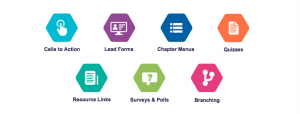
Social media has changed the way we shop for services and products. According to Hubspot, consumers are a whopping 71% more likely to buy from a company if a social connection has recommended them on social media. This is brand advocacy and it happens all the time, unprompted and often unbeknownst to the company on the receiving end of the recommendation.
If companies are to tap into this consumer love and put a megaphone to it, they first need to identify potential brand evangelists. Finding these isn’t always easy and involves working out not just who has the loudest voice but how many people are listening.
In this piece, I want to look at 11 tried and trusted techniques and resources for identifying brand advocates in your industry.
1. Client Satisfaction Surveys
The first place to look for potential brand evangelists should be with the people you do business with.
If you have a lot of clients or customers then you may not know off the top of your head who is more likely to shout about your brand and who isn’t. This is where customer satisfaction surveys can really help.
Make sure you have it on your website and social media pages and link to it on your email signature. Think offline as well and include a printed survey form in store for people to fill in. The more feedback you can get the better.
2. Customer Reviews
You should always be looking for ways to encourage your clients and customers to give you reviews on sites like Google Plus and Yell.
This is also another quick win when it comes to identifying those with a lot of love for your business. It’s also an opportunity in turning negative experiences for customers into positive ones.
When you come across reviews online that are negative you should make the effort to reach out to that customer and do all you can to make things better.
Customers who feel like they have been listened to and had their worries or concerns addressed often make for the most vocal of brand advocates.
3. Social Media Followers
Social media followers can be a mixed bag and engagement levels can vary wildly.
Try to filter your list by concentrating on the followers who are constantly sharing or commenting on your content.
Finding brand advocates this way means giving them content to shout about in the first place, so it helps to establish yourself as a source of relevant, informative and entertaining content.
The better you get at this, the more brand advocates you are likely to attract through social media.
4. Asking New Clients Who Recommended You
Another way of ascertaining which of your clients really sings your praises is to find out if any of them have been recommending you to other people.
Some people are far more likely to give a recommendation in person when asked than take the time to write about you online. If these people are out there, then it pays to find them.
5. Approach Partners
Many businesses work and collaborate with a variety of other businesses and in a variety of capacities. These partners will often provide a service that you can’t but is related to your industry and as such they often have a lot of knowledge of your industry sector. It’s likely they may also have a degree of influence too.
It’s always worth considering these companies as potential brand advocates. This often works best as a two-way relationship, so you agree to give a shout out to their businesses and they’ll do the same for you.
6. Social Monitoring Tools
In 2014 I wrote an article about social monitoring and management tools. One of the conclusions was the sheer volume of tools available to new businesses and this can be daunting when coming to choose one (for this reason I’m not going to list individual tools but G2 Crowd’s user based comparison is a good starting point).
Some tools can help you identify who the thought leaders and influencers are amongst your followers or in your industry in general. Others monitor the internet for brand mentions. Many will also then help you manage and plan your interactions, shares and posts across social media.
Whilst you should avoid becoming overly reliant on these kinds of tools, they nonetheless represent a very powerful and efficient means of identifying and tracking the movers and shakers in your industry.
7. Social Engagement
We’ve already looked at exploring your social media followers to find potential brand advocates but it’s not always obvious to see which would make for the perfect fit for your brand. To really ascertain interest in your brand you need to engage in social conversations with both followers and non followers.
Responding to every comment, share or retweet can be very time consuming and could even be impossible if you have a huge active following. With a little help from the right social monitoring tool though you should be able to identify who the movers and shakers are and as a result who to direct most of your efforts towards engaging with.
8. Blogger Outreach
However you identify thought leaders and industry influencers, you need to engage with them and often that can mean more than simply re-tweeting their posts.
Blogs often have some of the most engaged audiences and the good ones often give a platform to real industry experts and analysts.
If you can build relationships with good bloggers then you might just be able to get them talking about your brand. Just remember it’s a two way street so you will need to offer them something in return.
9. Look To Your Employees
One often overlooked source of enthusiasm about your brand and your products is from within your own company.
Employees not only know a lot about what it is you do (as they are involved in doing it) but they are often very enthusiastic about it.
Remember, employees are never going to have the same clout as independent brand advocates but they may be some of your most vocal proponents so mobilising their collective voice is a no brainer.
10. Forums and Q&A Sites
Many companies have support forums online, where customers can ask questions or post suggestions. This allows enthusiastic product owners to address these concerns with their own expertise or passion for the product. This is fertile soil for identifying and nurturing brand evangelists.
Q&A sites also offer similar opportunities, where very specific questions are addresses by those with an inside knowledge and often passion for a particular product. Quora is the most well known of these but there are many others out there.
11. Bookmarking Sites
Social bookmarking sites once littered the internet but since using them to build links became a redundant strategy, their numbers have dwindled. Of course they always were, and still are, used by a lot of people for things other than link building and as such are the perfect place to find people who are eagerly sharing your content.
Sites like StumbleUpon, Digg.com, Delicious.com and Reddit are all potential sources of brand evangelists. Finding people who have a voice on these platforms also means you have the potential to tap into new audiences that wouldn’t necessarily have come across your brand or products before.
Hand-Picked Related Articles:
- Influencer Marketing 101 – How to Identify and Track Influencers
- How To Remove Bad Reviews From Google Local By Responding
- How to Encourage User Reviews: Tips for Small Business
11 Techniques To Identify Your Brand’s Evangelists
The post 11 Techniques To Identify Your Brand’s Evangelists appeared first on Search Engine People Blog.
Search Engine People Blog(130)







